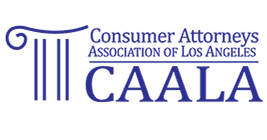There are plenty of reasons to leave the house when you live in Sherman Oaks. Just counting Ventura Boulevard, you’ve got shopping, dining, and amusement destinations that are famously known as the longest connected strip of businesses in the world.
As you leave the house you may not think about safety at each of your stops throughout the day. Yet, you are protected by state premises liability laws every time you step onto another person’s property. That can mean injuries suffered in someone’s home, an apartment complex, a retail store, a restaurant, or an amusement park. All places where the owner or operator owes you a safe visit.
If you are hurt on anyone’s property they own, are renting, leasing, or that they operate you can make a claim to help pay for your hospital bills and recovery.
Property Hazards and Proving Negligence
There may be a hole in the floor, a slippery spill, or a dangerously loose fixture overhead. If a property owner knew of these hazards and didn’t bother to fix them and then you get injured, you have the right to seek damages.
Talking to a local attorney might be an important first step. An attorney can be a great help in collecting evidence for the immediate task of proving negligence on the part of the owner. According to California law, an owner is held to a “duty of care” standard to ensure a visitor’s safety.
Negligence of these duties can be demonstrated if any of these factors can be proven:
- The property owner created a hazardous condition.
- The property owner or manager knew about the hazardous condition or should have known about the hazardous condition.
- The property owner or manager failed to remedy a known hazardous condition.
- The property owner or manager failed to warn visitors of a possibly hazardous condition.
- The hazardous condition caused your injury.
Typical Premises Liability Accidents
The hazards at any location can extend well beyond a misstep or a stubbed toe. Negligence on the part of an owner can lead to life-altering pain and injury. Some of the most common premises liability claims include the following:
- Slips and falls (water, oil or other liquid on floor; snow or ice buildup, etc.)
- Trips and falls (Debris on the floor/in the parking lot, rug or floor damage, a lack of handrails or warnings, etc.)
- Dog bites (A property owner may know that a dog is aggressive and dangerous)
- Swimming pool accidents (lack of proper barrier, fencing or sign warning against diving, etc.)
- Amusement park and Water park accidents (Rides get inspected, but can still injure park guests)
- Burns and electrocution (faulty wiring, hot liquids, fires, etc.)
- Security Lapses (if you are assaulted or robbed due to poor security measures)
- Falling merchandise (improper stacking or shelving, etc.)
Premises Liability Insurance Coverage
Residential and commercial property owners may carry premises liability insurance to cover injuries to visitors. An injury in someone’s home may or may not be covered by a home owner’s policy. A fall at the apartment of a friend may leave a property manager at fault, or an accident occurred while playing on their trampoline, or recreational areas.
These are complex legal details to work out. There can many parties at fault in these cases as well. Property owners, renters, and those leasing or managing a property can all be liable for preventable injuries.
There are many factors to consider when determining if you should file a claim for your injury. Contacting an experienced attorney may be the only way to make sure you receive the maximum damages for your case. You should be free to focus on your recovery from your injuries.
Contact a Sherman Oaks Premises Injury Attorney
The best thing to do when injured in an accident on someone else’s property is to talk to a Sherman Oaks Personal Injury Lawyer who understands the law and has experience getting injured victims the compensation they deserve.
Call the Law Firm of Steers & Associates at 800 824 5416 or click here to contact us online. We have attorneys with years of experience dealing with every type of personal injury, and we get results against the insurance companies and their highly-paid lawyers. Call us now for a free consultation to discuss your legal options.






